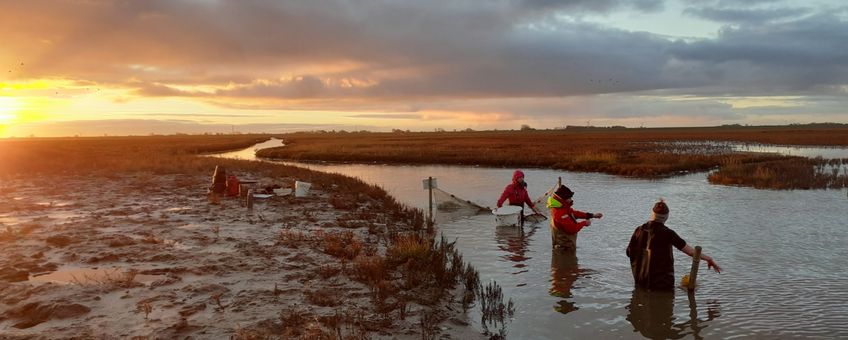
New insights into the ecological value of the Wadden Sea
NIOZ Royal Netherlands Institute for Sea ResearchThe project Wadden Mosaic focused on the sublittoral nature of the Wadden Sea, the area permanently covered by water. The research concentrated on species living in the bottom or on the seabed, such as shellfish, worms, starfish, crabs and shrimps. The Swimway Wadden Sea project mapped the role of the Wadden Sea for different fish species, with the aim of understanding their migration patterns and the importance of the area for biodiversity.
Research into the ecological significance of the subtidal area
Oscar Franken, scientific coordinator of the Wadden Tools Wadden Mosaic project, looks back: "Until recently, an area-wide picture of benthic life in the Wadden Sea was lacking. Thanks to two large sampling campaigns, we now have detailed data on the distribution of almost 140 species in the sublittoral, the permanently submerged part of the Wadden Sea, and their relationships."
The study focused on the deeper parts of the Wadden Sea and mapped ecologically valuable areas. Various management measures were also tested. These showed that complex structures provide protection for juvenile shellfish, that hard structures on the mudflats rapidly develop into species-rich habitats, and the possibility of restoring submerged seagrass was investigated.

The overlap between protected areas and ecologically important sites was also evaluated. "In the deeper parts of the Wadden Sea, only two per cent of ecologically important sites fall within protected areas," says Franken. "All in all, the study provided valuable insights."
Fish in the hidden world of the Wadden Sea
The Wadden Tools Swimway project focused on fish in the Wadden Sea, focusing on previously unexplored habitats such as the deeper parts, shellfish beds and the edges of the mudflats. The research mapped how different fish species use various habitats, which areas are crucial and what the impact of climate change may be on fish populations. These insights are valuable for the future management of the Wadden Sea.
"With this project, we have started to fill important knowledge gaps," says scientific coordinator Ingrid Tulp. "This mainly concerns species not well covered by regular monitoring, such as larger fish (sea bass, harders, sharks), school-forming fish (herring, sprat) and fish in little-studied areas, such as salt marshes and mussel beds."
Ingrid Tulp continues: "We investigated how these species move around, what places they use, what they eat and how they evolve. We also looked at how climate change affects their living conditions. For instance, we discovered that sea bass swim to the English Channel in winter but return to their familiar spot in the Wadden Sea every summer, and that fish in marsh creeks depend on freshwater supply. In addition, the deeper channels of the Wadden Sea are essential for small pelagic fish and the birds that depend on them."
Intensive cooperation for Wadden Sea research
The Wadden Mosaic project is a collaboration between Natuurmonumenten, the University of Groningen (RUG) and the Royal Netherlands Institute for Sea Research (NIOZ). It is funded by the Wadden Fund, Rijkswaterstaat and the provinces of Groningen, Friesland and North Holland.
The Swimway Wadden Sea project is a collaboration between NIOZ, RUG, Wageningen Marine Research, the Waddenvereniging, Rijkswaterstaat and Sportvisserij Nederland. The project is funded by the Wadden Fund, the Ministry of LVVN, Rijkswaterstaat and the provinces of Groningen, Friesland and North Holland.
Both projects are part of the overarching Wadden Tools project.
Text: Royal Netherlands Institute for Sea Research (NIOZ)
Photos: Swimway Wadden Sea (lead photo: researcher Hannah Charan-Dixon with her team at work in the salt marshes); Wadden Mosaic
